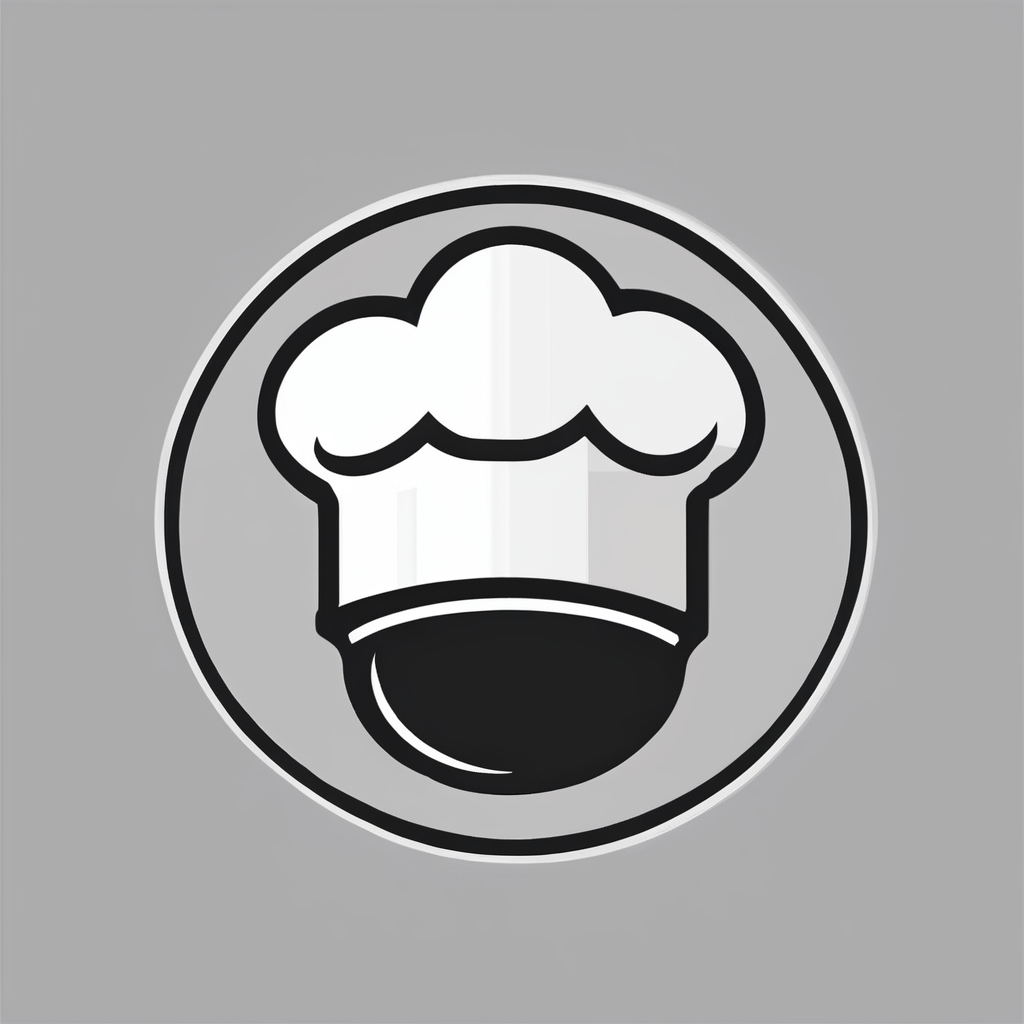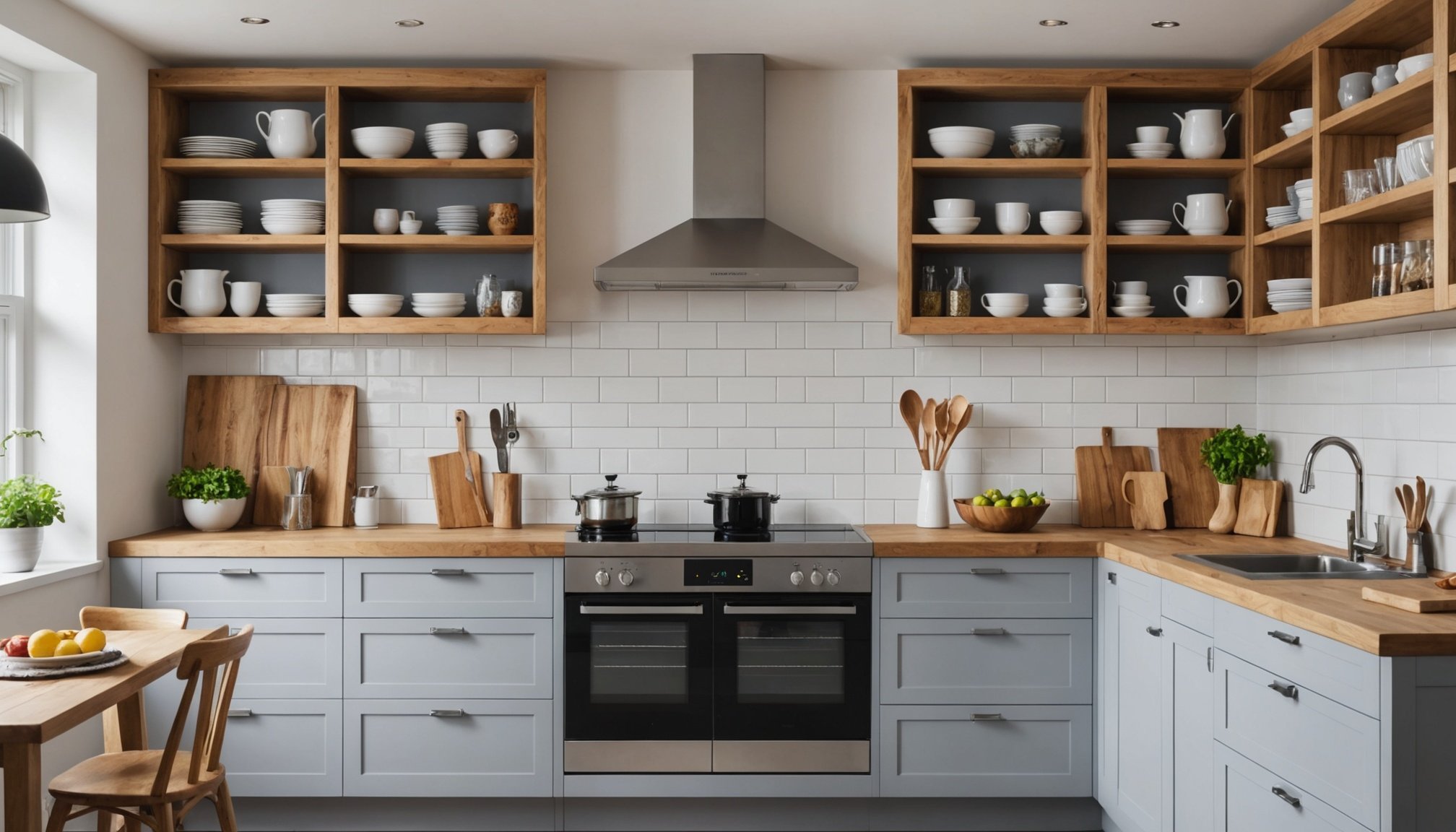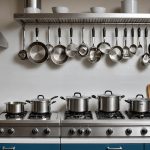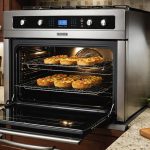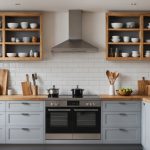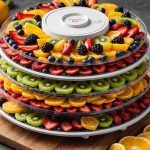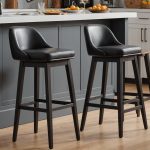The Definitive UK Homeowner’s Handbook: Choosing the Perfect Kitchen Shelving Units
When it comes to designing or renovating your kitchen, one of the most crucial elements to consider is the shelving and storage units. These components not only enhance the aesthetic of your kitchen but also play a vital role in its functionality. Here’s a comprehensive guide to help you choose the perfect kitchen shelving units for your home.
Understanding Your Kitchen Space
Before diving into the world of kitchen shelving, it’s essential to understand the layout and dimensions of your kitchen. Different kitchen layouts require different types of shelving and storage solutions.
This might interest you : Your comprehensive handbook for choosing durable kitchen tiles perfect for the uk weather
Kitchen Layouts and Their Implications
-
L-Shaped Kitchen Layout: Ideal for slightly larger kitchen spaces, this layout allows for counters and cabinets along two adjacent walls, creating an open and versatile space. It is perfect for incorporating traditional finishes like wooden cabinetry or ornate details while accommodating modern appliances[1].
-
U-Shaped Kitchen Layout: Suitable for spacious kitchens, this design provides ample storage and workspace by surrounding the user on three sides with countertops and cabinetry. It is particularly practical for avid cooks who need dedicated areas for food prep, cooking, and cleanup[1].
In parallel : Discover Incredible UK Bargains: The Ultimate Resource for Professional Kitchen Equipment
-
Galley Kitchen Layout: For narrower spaces, a galley or corridor kitchen layout is more practical. This design features countertops and cabinetry on two opposite walls, creating a streamlined and efficient workspace. It is excellent for medium-sized kitchens where every square inch matters[1].
Types of Kitchen Shelving Units
Choosing the right type of shelving unit can significantly impact the functionality and look of your kitchen.
Open Shelving
Open shelving has been a popular trend in recent years, but it comes with its own set of challenges.
- Pros: Open shelving can add a light and airy feel to your kitchen, making it look more spacious. It also provides easy access to frequently used items and can be a great way to display decorative pieces[3].
- Cons: Open shelves demand expert styling to look good and can quickly become dusty and cluttered if not maintained properly. Designers often recommend opting for cabinets with fluted glass instead, which provides a similar look while keeping items tucked away[2].
Closed Cabinets
Closed cabinets are a more traditional and practical choice for many homeowners.
- Pros: Closed cabinets offer ample storage space and keep your kitchen looking tidy. They can be designed to match your kitchen’s aesthetic, whether it’s modern, traditional, or eclectic[5].
- Cons: Closed cabinets can make the space feel more enclosed, especially if they extend all the way to the ceiling. A balanced approach, combining closed cabinets with some open shelving, can introduce visual interest and maintain ample storage space[2].
Design Considerations
When selecting kitchen shelving units, several design considerations should be kept in mind.
Material and Finish
The material and finish of your shelving units can significantly impact the overall look of your kitchen.
- Wooden Cabinets: Wooden cabinets, especially those made from oak, can add a warm and traditional feel to your kitchen. You can update the look by incorporating modern elements like stone surfaces, large-scale floor tiles, or fluted details[3].
- Painted Finishes: Painted finishes can provide a fresh and modern look. Shaker-style doors with painted finishes are a popular choice for both traditional and contemporary kitchens[5].
Hardware and Handles
The hardware and handles on your cabinets can also make a significant difference.
- Brass Handles: Brass handles can add a high-end and antique-inspired touch to your kitchen. They are particularly suitable for traditional or eclectic kitchen designs[3][5].
- Handleless Cabinets: Handleless cabinets are a modern trend that can create a sleek and minimalist look. They are ideal for contemporary kitchens and can be combined with other design elements like flush mount lighting[2].
Practical Storage Solutions
Effective storage is crucial for maintaining a functional and clutter-free kitchen.
Larder Units
Larder units are a great way to maximize storage in your kitchen.
- Pros: Larder units provide ample storage for pantry items, keeping your main kitchen space uncluttered. They can be designed with classic wood finishes and vintage-inspired shelving to enhance the traditional feel of your kitchen[1].
- Cons: Larder units require sufficient space to be effective. They are best suited for larger homes with enough room to designate a small area for this purpose[1].
Island Units
Kitchen islands can serve multiple purposes, from extra storage to a cooking area or dining space.
- Pros: Kitchen islands can be a central focal point in the room, introducing a mix of elegance and utility. They can feature decorative moldings, marble countertops, or period-appropriate finishes to maintain the historic feel of a Victorian home[1].
- Cons: Islands need careful placement to avoid obstructing the work triangle (the relationship between the sink, hob, and fridge). They work best in larger kitchens with ample room to accommodate them without feeling cramped[4].
Planning Your Kitchen Renovation
Planning is key to a successful kitchen renovation.
The Work Triangle
The work triangle concept, although somewhat dated, remains relevant. It involves keeping the three most visited areas of the kitchen (the cooker, sink, and fridge) in a roughly triangular layout to ensure smooth movement between them.
- Consideration: When planning your kitchen, consider the placement of additional appliances like the dishwasher and separate hobs and ovens. Ensure that your shelving units and storage solutions do not obstruct this flow but rather complement it[4].
Budgeting and Planning Permission
Budgeting and planning permission are critical aspects of any kitchen renovation.
- Budgeting: Determine how much you are willing to spend on your kitchen renovation, including the cost of shelving units, appliances, and any necessary plumbing or electrical work. Consider the cost of a kitchen island and whether it fits within your budget[4].
- Planning Permission: Depending on the extent of your renovation, you may need planning permission. This is particularly relevant if you are extending your kitchen or making significant structural changes[4].
Ultimate Guide to Choosing the Perfect Kitchen Shelving Units
Here’s a detailed guide to help you make the right choice:
Assess Your Needs
- Storage Requirements: Determine how much storage you need based on your cooking habits and the items you need to store.
- Aesthetic Preferences: Decide on the style and material that fits your kitchen design. Whether you prefer a traditional, contemporary, or eclectic look, choose shelving units that align with your vision.
Popular Choices
- Lay-On Doors: These are the most popular choice in UK homes, known for their versatility and affordability. They sit proudly on the face of the cabinet and use a concealed hinge[5].
- In-Frame Doors: Reserved for traditional style kitchens, in-frame doors offer a classic look that can be paired with shaker-style cabinets or other traditional elements[5].
Comparison Table
| Type of Shelving Unit | Pros | Cons | Suitable For |
|---|---|---|---|
| Open Shelving | Light and airy, easy access to items | Dusty and cluttered if not maintained, demands expert styling | Modern and eclectic kitchens |
| Closed Cabinets | Ample storage, keeps kitchen tidy | Can make space feel enclosed | Traditional and contemporary kitchens |
| Larder Units | Ample storage for pantry items, keeps main kitchen uncluttered | Requires sufficient space | Larger homes with traditional or eclectic designs |
| Island Units | Central focal point, extra storage and cooking area | Needs careful placement to avoid obstructing work triangle | Larger kitchens with ample room |
Quotes from Experts
-
On Open Shelving: “Open shelving is an often overused kitchen element that can become a deeply impractical feature for homeowners. Open shelves demand expert styling to become the beautiful display areas they were intended to be, however, most homeowners find it challenging to maintain the styling of these shelves and these spaces quickly become dusty and cluttered,” says Julia Rose Schweyer, of Julia Rose Interiors[2].
-
On Kitchen Islands: “A new kitchen extension offers an opportunity to create a social hub for all the family to enjoy, whilst making the most of your room’s features such as natural light and outdoor views,” says Sophie Devonald, designer at Crown Imperial[4].
Choosing the perfect kitchen shelving units is a crucial part of creating your dream kitchen. Whether you opt for open shelving, closed cabinets, larder units, or island units, each choice should be made with careful consideration of your kitchen’s layout, your storage needs, and your aesthetic preferences. By understanding the pros and cons of each option and planning your renovation meticulously, you can create a kitchen that is both functional and beautiful.
Practical Insights and Actionable Advice
- Mix and Match: Combine different types of shelving units to create a balanced look. For example, use closed cabinets for most of your storage and add a few open shelves for display purposes.
- Consider the Work Triangle: Ensure that your shelving units and storage solutions do not obstruct the flow between the sink, hob, and fridge.
- Budget Wisely: Determine your budget and stick to it. Consider the cost of all elements, including appliances and any necessary plumbing or electrical work.
- Seek Professional Advice: If you are unsure about any aspect of your kitchen renovation, consult with a professional designer or contractor.
By following these guidelines and considering your specific needs and preferences, you can create a kitchen that is not only beautiful but also highly functional and perfect for your home.
